
How to Use 2s 7.4v lipo: Examples, Pinouts, and Specs
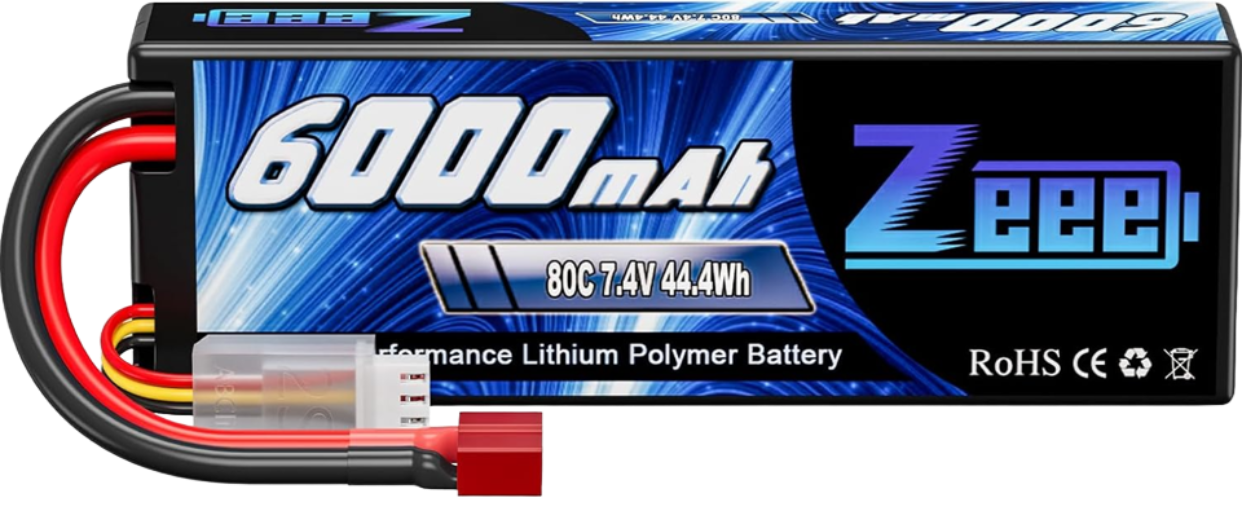
 Design with 2s 7.4v lipo in Cirkit Designer
Design with 2s 7.4v lipo in Cirkit DesignerIntroduction
The 2S 7.4V LiPo Battery (Manufacturer: HA, Part ID: 2S 7.4) is a 2-cell lithium polymer (LiPo) battery pack that delivers a nominal voltage of 7.4 volts. Known for its high energy density, lightweight design, and reliable performance, this battery is widely used in applications requiring compact and efficient power sources.
Explore Projects Built with 2s 7.4v lipo
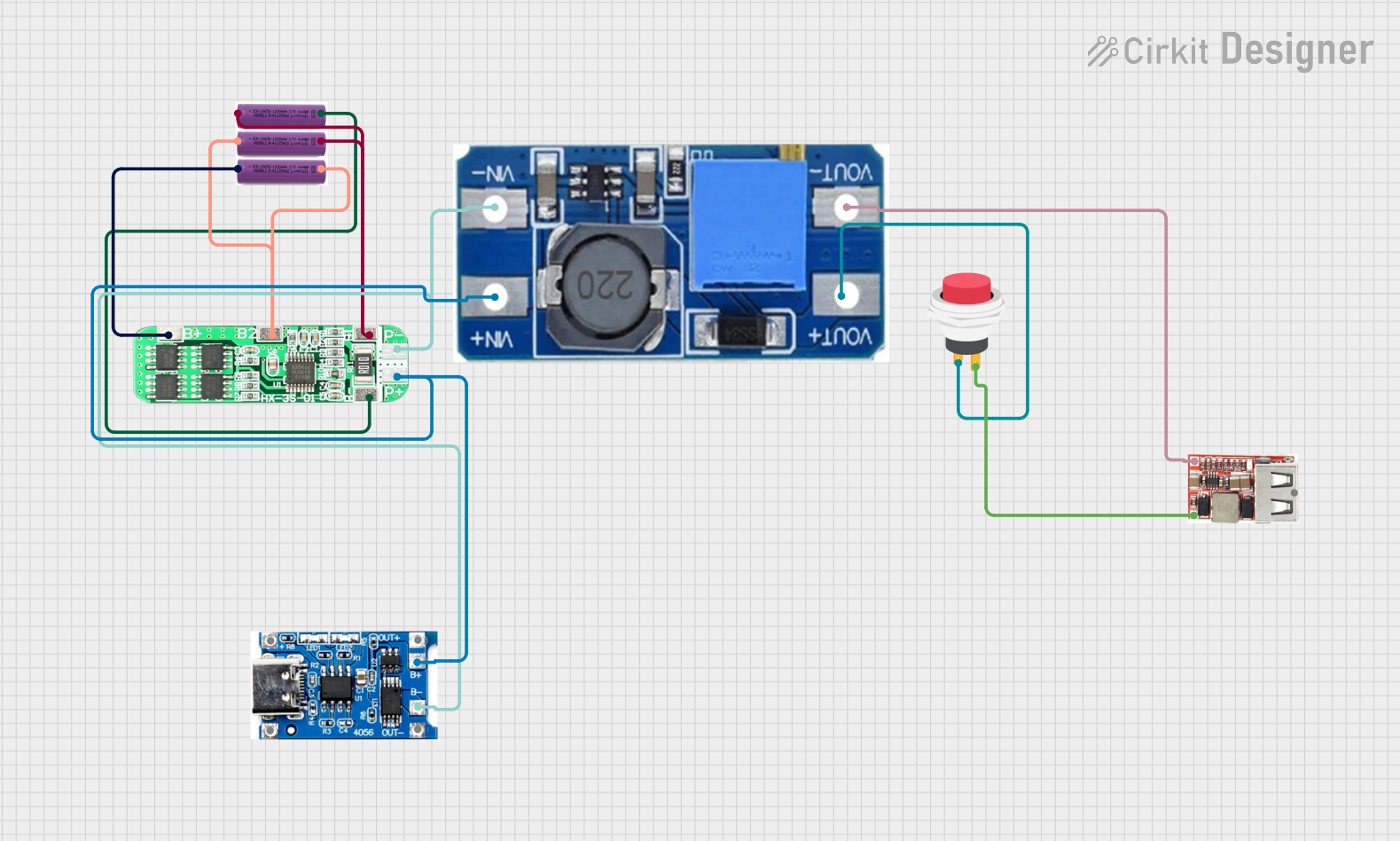
 Open Project in Cirkit Designer
Open Project in Cirkit Designer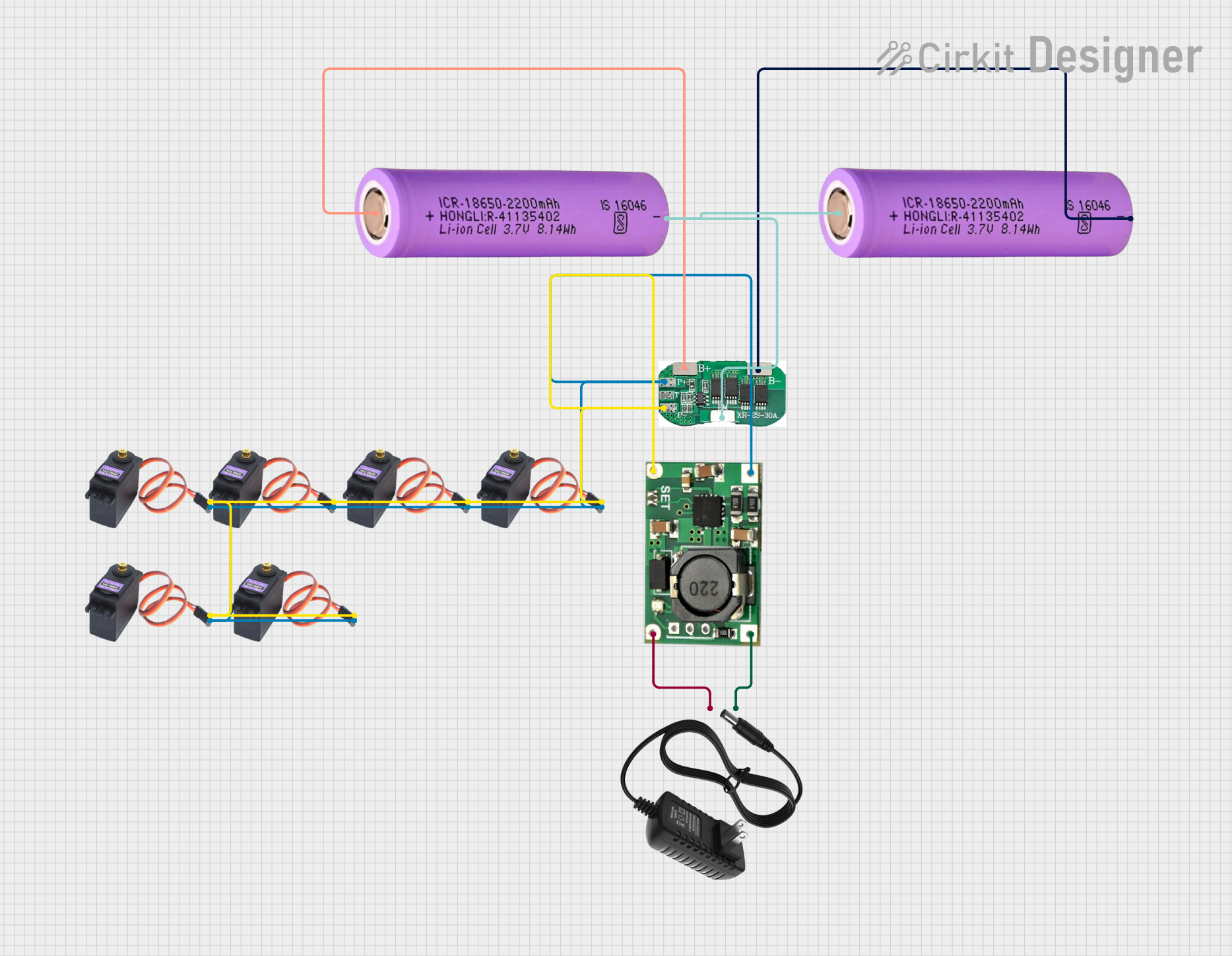
 Open Project in Cirkit Designer
Open Project in Cirkit Designer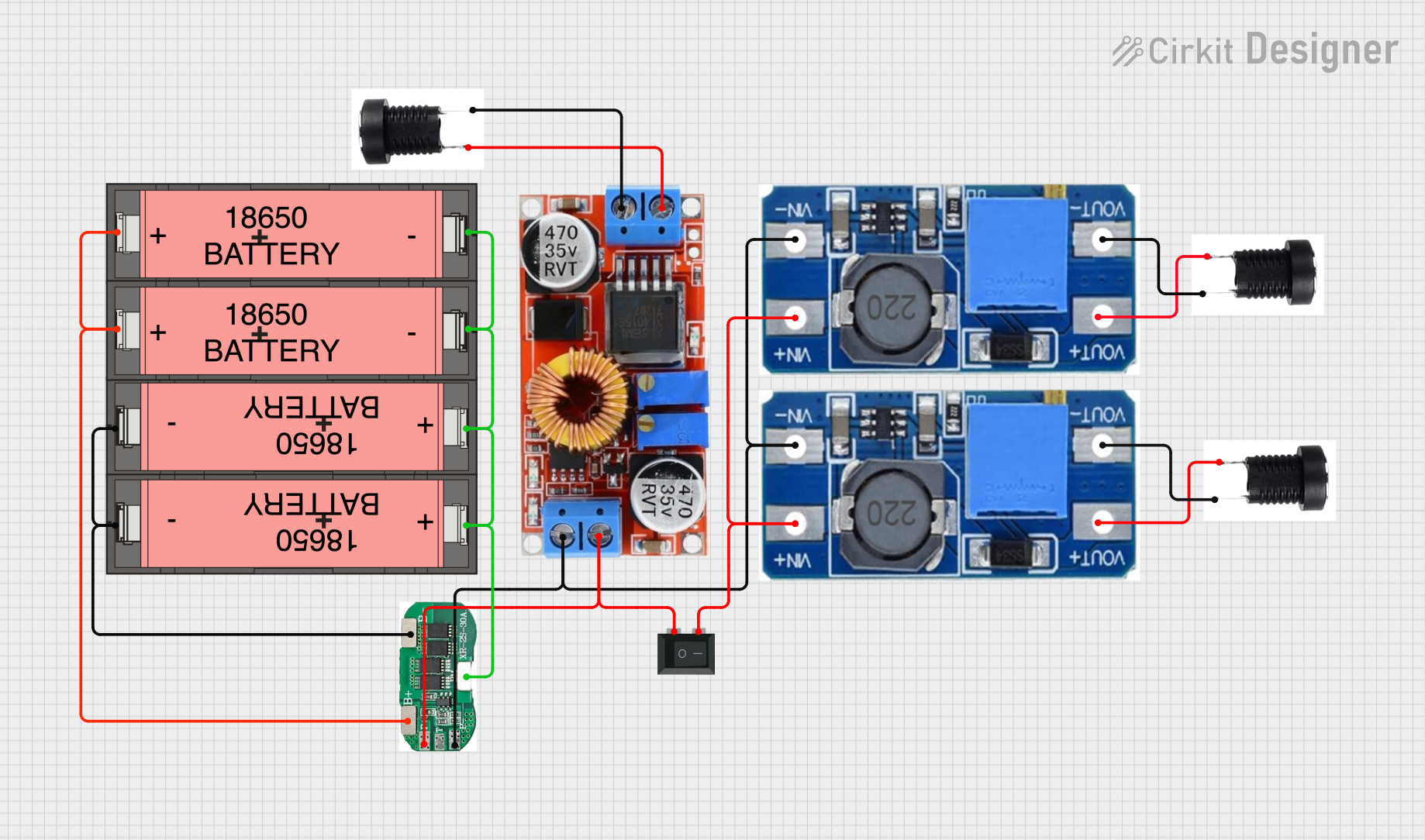
 Open Project in Cirkit Designer
Open Project in Cirkit Designer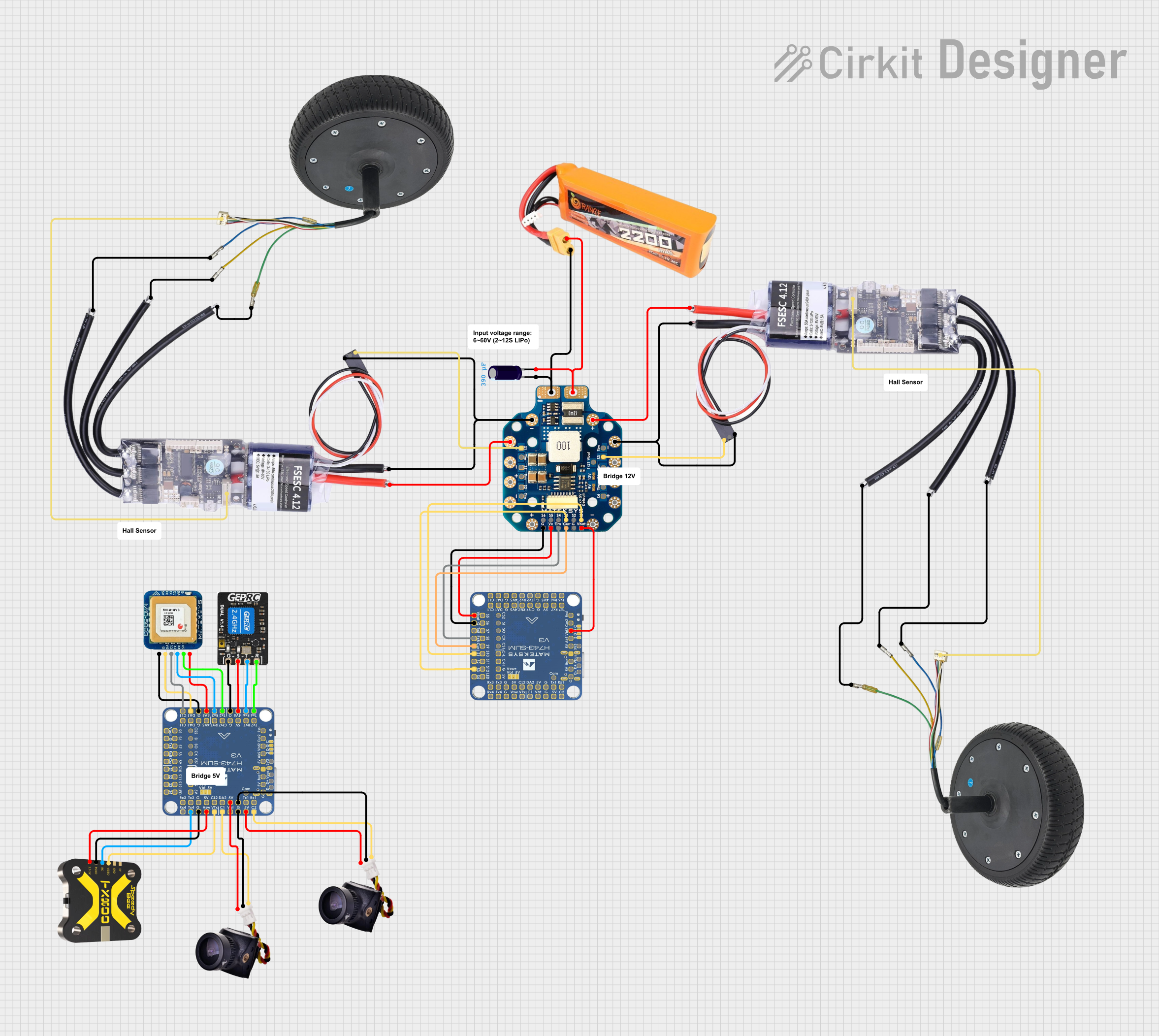
 Open Project in Cirkit Designer
Open Project in Cirkit DesignerExplore Projects Built with 2s 7.4v lipo

 Open Project in Cirkit Designer
Open Project in Cirkit Designer
 Open Project in Cirkit Designer
Open Project in Cirkit Designer
 Open Project in Cirkit Designer
Open Project in Cirkit Designer
 Open Project in Cirkit Designer
Open Project in Cirkit DesignerCommon Applications
- Remote control (RC) vehicles, such as cars, boats, and planes
- Drones and quadcopters
- Robotics and automation systems
- Portable electronic devices
- DIY electronics and hobbyist projects
Technical Specifications
The following table outlines the key technical specifications of the 2S 7.4V LiPo battery:
| Parameter | Specification |
|---|---|
| Nominal Voltage | 7.4V (2 cells in series) |
| Cell Configuration | 2S (2 cells in series) |
| Capacity | Varies (e.g., 1000mAh, 2200mAh, etc.) |
| Maximum Discharge Rate | Typically 20C to 50C (varies by model) |
| Maximum Charge Voltage | 8.4V (4.2V per cell) |
| Minimum Discharge Voltage | 6.0V (3.0V per cell) |
| Connector Type | XT60, JST, or other (varies by model) |
| Balancing Connector | JST-XH (standard for 2S LiPo packs) |
| Weight | Varies based on capacity (e.g., ~100g) |
| Dimensions | Varies based on capacity |
Pin Configuration
The 2S 7.4V LiPo battery typically has two connectors:
- Main Power Connector: Supplies power to the load.
- Balance Connector: Used for charging and balancing the cells.
Main Power Connector Pinout
| Pin | Description |
|---|---|
| + | Positive terminal |
| - | Negative terminal |
Balance Connector Pinout (JST-XH for 2S)
| Pin | Description |
|---|---|
| 1 | Cell 1 negative (-) |
| 2 | Cell 1 positive (+) / Cell 2 negative (-) |
| 3 | Cell 2 positive (+) |
Usage Instructions
How to Use the 2S 7.4V LiPo Battery in a Circuit
Connect the Main Power Connector:
- Attach the positive (+) and negative (-) terminals to the corresponding inputs of your device or circuit.
- Ensure the connector type matches your device (e.g., XT60 or JST).
Charging the Battery:
- Use a LiPo-compatible balance charger to charge the battery.
- Connect the balance connector to the charger to ensure proper cell balancing.
- Set the charger to the correct voltage (7.4V) and current (e.g., 1C rate for safe charging).
Discharging the Battery:
- Avoid discharging below 6.0V (3.0V per cell) to prevent damage.
- Use a battery monitor or low-voltage alarm to track the voltage during use.
Mounting and Handling:
- Secure the battery in your device using straps or holders to prevent movement.
- Avoid puncturing, crushing, or exposing the battery to high temperatures.
Important Considerations and Best Practices
- Charging Safety: Always charge the battery on a non-flammable surface and never leave it unattended.
- Storage: Store the battery at a voltage of 3.7V to 3.85V per cell (storage charge) in a cool, dry place.
- Overcurrent Protection: Use a fuse or current-limiting circuit to prevent overcurrent damage.
- Compatibility: Ensure the battery's voltage and capacity meet the requirements of your device.
Example: Using the Battery with an Arduino UNO
To power an Arduino UNO with the 2S 7.4V LiPo battery, you can use a voltage regulator to step down the voltage to 5V. Below is an example circuit and code:
Circuit Setup
- Connect the battery's positive (+) terminal to the input of a 5V voltage regulator (e.g., LM7805).
- Connect the regulator's output to the Arduino's 5V pin.
- Connect the battery's negative (-) terminal to the Arduino's GND pin.
Example Code
// Example code to blink an LED using Arduino UNO powered by a 2S 7.4V LiPo battery
const int ledPin = 13; // Pin connected to the onboard LED
void setup() {
pinMode(ledPin, OUTPUT); // Set the LED pin as an output
}
void loop() {
digitalWrite(ledPin, HIGH); // Turn the LED on
delay(1000); // Wait for 1 second
digitalWrite(ledPin, LOW); // Turn the LED off
delay(1000); // Wait for 1 second
}
Troubleshooting and FAQs
Common Issues and Solutions
Battery Not Charging:
- Cause: Incorrect charger settings or damaged balance connector.
- Solution: Verify the charger is set to 7.4V and the balance connector is properly connected.
Battery Swelling or Puffing:
- Cause: Overcharging, over-discharging, or physical damage.
- Solution: Stop using the battery immediately and dispose of it safely.
Device Not Powering On:
- Cause: Low battery voltage or loose connections.
- Solution: Check the battery voltage and ensure all connections are secure.
Shortened Battery Life:
- Cause: Frequent over-discharging or improper storage.
- Solution: Avoid discharging below 6.0V and store the battery at the recommended voltage.
FAQs
Q: Can I use this battery for a 12V device?
- A: No, the 2S 7.4V LiPo battery is not suitable for 12V devices. Consider using a step-up converter or a higher-voltage battery.
Q: How do I know when the battery is fully charged?
- A: The charger will indicate a full charge when the voltage reaches 8.4V (4.2V per cell).
Q: Is it safe to leave the battery connected to my device when not in use?
- A: No, always disconnect the battery to prevent over-discharge or accidental short circuits.
Q: Can I use this battery in cold weather?
- A: LiPo batteries may experience reduced performance in cold temperatures. Keep the battery warm before use for optimal performance.